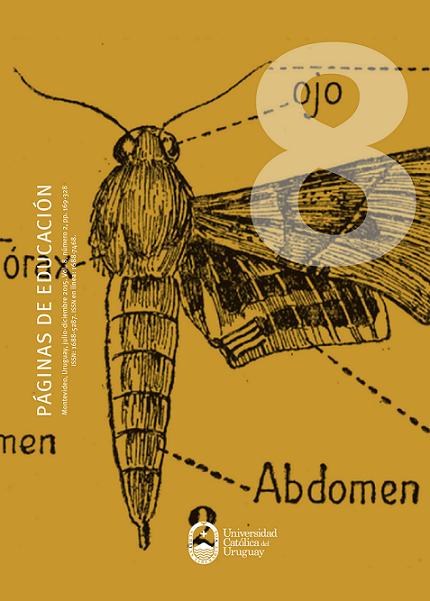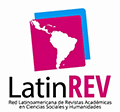Constructive, self-regulatory, situated and collaborative learning: an approach to the acquisition of the adaptative competency in mathematics.
DOI:
https://doi.org/10.22235/pe.v8i2.690Keywords:
constructive learning, self regulation, adaptative competency, mathematics, primaryAbstract
Abstract. Currently, in a learning society, education should focus on promoting Adaptive Competition (AC) which is defined as the ability to flexibly apply knowledge and skills in different contexts. This article discusses three questions: What should students learn to acquire the AC in a particular field? What are the features that are required in a productive learning process for AC? How can stimulate and extend this learning through instruction? This paper presents an illustrative study focused on the design of a learning environment to improve the competence of problem solving in primary school students. The final dimensions indicate the challenges of implementing innovative learning environments.Downloads
References
Alfieri, L., P.J. Brooks, N.J. Aldrich y H.R. Tenenbaum (2011). Does discovery-based instruction enhance learning? Journal of Educational Psychology 103, 1-18.
Bendixen, L.D. y Feucht F.C. (eds.) (2010) Personal epistemology in the classroom: Theory, research, and implications for practice. Cambridge, UK: Cambridge University Press.
Berliner, D.C. (2008). Research, policy, and practice: The great disconnect. En S.D. Lapan & M.T. Quartaroli (eds.) Research essentials: An introduction to designs and practices (pp. 295-325). Hoboken, NJ: Jossey-Bass.
Berry, J., & Sahlberg, P. (1996). Investigating pupils’ ideas of learning. Learning and Instruction, 6, 19-36.
Boekaerts, M., Pintrich, P.R. & Zeidner (eds.) (2000). Handbook of self-regulation. San Diego: Academic Press.
Bransford, J., Stevens, R., Schwartz, D., Meltzoff, A., Pea, R., Roschelle, J., Vye, N., Kuhl, P., Bell, P., Barron, B., Reeves, B., & Sabelli, N. (2006). Learning theories and education: Toward a decade of synergy. En P.A. Alexander & P.H. Winne (eds.) Handbook of Educational Psychology (2nd. ed.) (pp 209-244). Mahwah, NJ: Lawrence Erlbaum Associates.
Brown, A.L., & Campione, J.C. (1994). Guided discovery in a community of learners. In K. McGilly (ed.) Classroom lessons: Integrating cognitive theory and classroom practice (pp. 229-270). Cambridge, MA: The MIT Press.
Brown, A. L., & Palincsar, A. S. (1989). Guided, cooperative learning and individual knowledge acquisition. En L.B. Resnick (ed.) Knowing, learning and instruction. Essays in honor of Robert Glaser (pp. 393-451). Hillsdale, NJ: Erlbaum.
Brown, R., Pressley, M., Van Meter, P., & Schuder, T. (1996). A quasi-experimental validation of transactional strategies instruction with low-achieving second-grade readers. Journal of Educational Psychology, 88, 18-37.
Bruner, J.S. (1961). The act of discovery. Harvard Educational Review 31, 21-32.
Chi, M.T.H., Feltovich, P.J.,& Glaser, R. (1981). Categorization and representation of physics problems by experts and novices. Cognitive Science, 5, 121-125.
Chi, M.T.H., Glaser, R., & Farr, M.J. (1988). The nature of expertise. Hillsdale, NJ: Lawrence Erlbaum Associates.
Cognition and Technology Group at Vanderbilt (1997). The Jasper Project: Lessons in curriculum, instruction, assessment, and professional development. Mahwah, NJ: Lawrence Erlbaum Associates.
De Corte, E. (1995). Learning theory and instructional science. En P. Reiman & H. Spada (eds.) Learning in humans and machines. Towards an interdisciplinary learning science (pp. 97-108). Oxford, UK: Elsevier Science.
De Corte, E. (2003). Transfer as the productive use of acquired knowledge, skills, and motivations. Current Directions in Psychological Science, 12, 142-146.
De Corte, E. (2007). Learning from instruction: The case of mathematics. Learning Inquiry, 1, 19-30.
De Corte, E. (2010). Historical developments in the understanding of learning. En H. Dumont, D. Istance, & F. Benavides (eds.) The nature of learning. Using research to inspire practice (pp. 35-67). París: OECD Publishing.
De Corte, E., Depaepe, F., & Verschaffel, L. (2010). Fostering self-regulation skills in mathematics. En H. Pedrosa-de-Jesus, C. Evans, Z. Charlesworth & E. Cools (eds.) ELSIN XV, Proceedings of the 15th Annual Conference of the European Learning Styles Information Network: Exploring styles to enhance learning and teaching in diverse contexts (pp. 133-139). Aveiro, Portugal: Universidade de Aveiro.
De Corte, E., Greer, B, & Verschaffel, L. (1996). Mathematics teaching and learning. En D.C. Berliner & R.C. Calfee (eds.) Handbook of educational psychology (491-549). New York, NY: Macmillan.
De Corte, E., Mason, L., Depaepe, F., & Verschaffel, L. (2011). Self-regulation of mathematical knowledge and skills. En B.J. Zimmerman & D.H. Schunk (eds.), Handbook of self-regulation of learning and performance (pp. 155-172). New York, NY: Routledge.
De Corte, E., & Verschaffel, L. (1987). The effect of semantic structure on first graders’ strategies for solving addition and subtraction word problems. Journal for Research in Mathematics Education, 18, 363-381.
De Corte, E., Verschaffel, L., & Masui, C. (2004). The CLIA-model: A framework for designing powerful learning environments for thinking and problem solving. European Journal of Psychology of Education, 19, 365-384.
De Corte, E., Verschaffel, L .& Op ‘t Eynde P. (2000). Self-regulation: A characteristic and a goal of mathematics education. En P. Pintrich, M. Boekaerts, & M. Zeidner (Eds.), Self-regulation: Theory, research, and applications (pp. 687-726). Mahwah, NJ: Lawrence Erlbaum Associates.
De Corte, E., Verschaffel, L., & Van de Ven, A. (2001). Improving text comprehension strategies in upper primary school children: A design experiment. BritishJournal of Educational Psychology, 71, 531-559.
Depaepe, F., De Corte, E., & Verschaffel, L. (2007). Unravelling the culture of the mathematics classroom: A video-based study in sixth grade. International Journal of Educational Research, 46, 266-279.
Dewey, J. (1916). Democracy and education. New York, NY: Macmillan.
Dignath, C., & Büttner, G. (2008). Components of fostering self-regulated learning among students. A meta-analysis on intervention studies at primary and secondary school level. Metacognition and Learning, 3, 231-264.
Dignath, C., Buettner, G, & Langfeldt, H. (2008). How can primary school students learn self-regulated learning strategies most effectively? A meta-analysis on self-regulation training programmes. Educational Research Review, 3, 101-129.
Ericsson, K.A. (2003). The acquisition of expert performance as problem solving: Construction and modification of mediating mechanisms through deliberate practice. In J.E. Davidson & R.J. Sternberg (eds.), The psychology of problem solving (pp. 31-83). Cambridge, UK: Cambridge University Press.
European Round-Table of Industrialists (ERT) (1995). Education for Europeans: Towards a learning society. Bruselas: ERT.
Garner, R. (1987). Metacognition and reading comprehension. Norwood, NJ: Ablex.
Hatano, G. (1996). A conception of knowledge acquisition and its implications for mathematics education. In L.P. Steffe, P. Nesher, P. Cobb, J. Kilpatrick, & B. Greer (eds.), Theories of mathematical learning (pp. 197-217). Mahwah, NJ: Lawrence Erlbaum Associates.
Hatano, G., & Inagaki, K. (1986). Two courses of expertise. En H. Stevenson, H. Azuma, & K. Hakuta (eds.), Child development and education in Japan (pp. 262-272). New York, NY: Freeman.
Hatano, G., & Oura, Y. (2003). Commentary. Reconceptualizing school learning using insightfrom expertise research. Educational Researcher, 32(8), 26-29.
Kirby, J.R., & Lawson, M.J. (2012). Enhancing the quality of learning. Dispositions, instruction, and learning processes. Cambridge, UK: Cambridge University Press.
Kirschner, P.A., Sweller, J., & Clark, R.E. (2006). Why minimal guidance during instruction does not work: An analysis of the failure of constructivist, discovery, problem-based, experiential, and inquiry-based teaching. Educational Psychologist, 41, 75-86.
Kirshner, D., & Whitson, J.A. (eds.) (1997) Situated cognition: Social, semiotic, and psychological perspectives. Mahwah, NJ: Lawrence Erlbaum Associates.
Lehtinen, E. (2003). Computer-supported collaborative learning: An approach to powerful learning environments. En E. De Corte, L. Verschaffel, N. Entwistle & J. van Merriënboer (eds.) Powerful learning environments: Unravelling basic componentsand dimensions (pp. 35-53). (Advances in Learning and Instruction Series.) Oxford, UK: Elsevier Science Ltd.
Mason, L., & Scrivani, L. (2004). Enhancing students’ mathematical beliefs: An intervention study. Learning and Instruction, 14, 153-176.
Mayer, R.E. (2004). Should there be a three-strikes rule against pure discovery learning? American Psychologist, 59, 14-19.
National Research Council. (2000). How people learn: Brain, mind, experience, and school. J.D. Bransford, A.L. Brown, & R.R. Cocking (eds.). Committee on Developments in the Science of Learning and Committee on Learning Research and Educational Practice. Washington, DC: National Academy Press.
National Research Council. (2005) How students learn: History, mathematics, and science in the classroom. Committee on How people learn, a targeted report for teachers, M.S. Donovan & J.D. Bransford (eds) Division of Behavioral and Social Sciences and Education. Washington, DC: National Academy Press.
Nunes, T., Schliemann, A.D., & Carraher, D.W. (1993). Street mathematics and school mathematics. Cambridge, UK: Cambridge University Press.
Piaget, J. (1955). The child’s construction of reality. London, UK: Routledge and Kegan Paul.
Picker, S.H., & Berry, J.S. (2000). Investigating pupils’ images of mathematicians. Educational Studies in Mathematics, 43, 65-94.
Remillard, J.T. (2005). Examining key concepts in research on teachers’ use of mathematics curricula. Review of Educational Research, 75, 211-246.
Salomon, G. (Ed.). (1993). Distributed cognition. Psychological and educational considerations. Cambridge, UK: Cambridge University Press.
Salomon, G., & Perkins, D.N. (1998). Individual and social aspects of learning. En P.D. Pearson & A. Iran-Nejad (eds.), Review of research in education (vol. 23, pp. 1-24). Washington, DC: American Educational Research Association.
Scardamalia, M., Bereiter, C., & Steinbach, R. (1984). Teachability of reflective processes in written composition. Cognitive Science, 8, 173-190.
Schmidt, H.G., Loyens, S.M.M., van Gog, T., & Paas, F. (2007). Problem-based learning is compatible with human cognitive architecture: Commentary on Kirschner, Sweller, and Clark (2006). Educational Psychologist, 42, 91-97.
Schoenfeld, A.H. (1985). Mathematical problem solving.
New York, NY: Academic Press.
Schoenfeld, A.H. (1992). Learning to think mathematically: Problem solving, metacognition, and sense-making in mathematics. En D.A. Grouws (ed.), Handbook of research on mathematics teaching and learning (pp. 334-370). New York, NY: Macmillan.
Schommer, M. (1994a). An emerging conceptualization of epistemological beliefs and their role in learning. En R. Garner & P. Alexander (Eds.), Beliefs about text and about text instruction (pp. 25-39). Hillsdale, NJ: Lawrence Erlbaum Associates.
Schommer, M. (1994b). Synthesizing epistemological beliefs research: Tentative understandings and proactive confusions. Educational Psychology Review, 6, 293-319.
Schraw, G. (2006). Knowledge structures and processes. En P.A. Alexander & P.H. Winne (Eds.), Handbook of educational psychology. (2nd. ed.) (pp. 245-263). Mahwah, NJ: Lawrence Erlbaum Associates.
Sfard, A. (1998).On two metaphors for learning and the dangers of choosing just one. Educational Researcher, 27(2), 4-13.
Simons, R.J., van der Linden, J., & Duffy, T. (Eds.). (2000). New learning. Dordrecht, The Netherlands: Kluwer Academic Publishers.
Slavin, R.E. (2010). Co-operative learning: What makes group-work work? En H. Dumont, D. Istance, & F. Benavides (eds.), The nature of learning. Using research to inspire practice (pp. 161-178). París: OECD Publishing.
Stinissen, J., Mermans, M., Tistaert, G. & Vander Steene, G. (1985). Leuvense Schoolvorderingentest Vernieuwde Wiskunde 2-6. [Leuven Standard Achievement Test New Mathematics 2-6] Brussel: C.S.B.O.
Songer, N.B., & Linn, M.C. (1991). How do students’ views of science influence knowledge integration? Journal of Research in Science Teaching, 28, 761-784.
Stokes, L.M., Sato, N.E., McLaughlin, M.W., & Talbert, J.E. (1997). Theory-based reform and problems of change: Contexts that matter for teachers' learning and community. Stanford, CA: Center for Research on the Context of Secondary Teaching, School of Education, Stanford University.
Timperley, H. (2008). Teacher professional learning and development. (Educational Practices Series, 18). Geneva, CH: International Bureau of Education.
Veenman, M. V. J., Van Hout-Wolters, B. H. A. M., & Afflerbach, P. (2006). Metacognition and learning: Conceptual and methodological considerations. Metacognition and Learning,1, 3-14.
Verschaffel, L., De Corte, E., Lasure, S., Van Vaerenbergh, G., Bogaerts, H., y Ratinckx, E. (1999). Learning to solve mathematical application problems: A design experiment with fifth graders. Mathematical Thinking and Learning, 1, 195-229.
Wineburg, S. (1991). Historical problem solving: A study of the cognitive processes used in the evaluation of documentary and pictorial evidence. Journal of Educational Psychology, 83, 73-83.
Wood, T., Cobb, P., & Yackel, E. (1991). Change in teaching mathematics: A case study. American Educational Research Journal, 28, 587-616.
Yackel, E., & Cobb, P. (1996). Sociomathematical norms, argumentation, and autonomy in mathematics. Journal for Research in Mathematics Education, 27, 458-477.
Zimmerman, B.J. (1994). Dimensions of academic self-regulation: A conceptual framework for education. En D.H. Schunk & B.J. Zimmerman (eds.), Self-regulation of learning and performance: Issues and educational applications (pp. 3-21). Hillsdale, NJ: Lawrence Erlbaum Associates.
Zimmerman, B.J., & Risemberg, R. (1997). Self-regulatory dimensions of academic learning and motivation. En G.D. Phye (Ed.), Handbook of academic learning: Construction of knowledge (pp. 105-125). San Diego, CA: Academic Press.
Zimmerman, B.J., & Schunk, D.H. (eds.). (2011). Handbook of self-regulation of learning and performance. New York, NY: Routledge.















